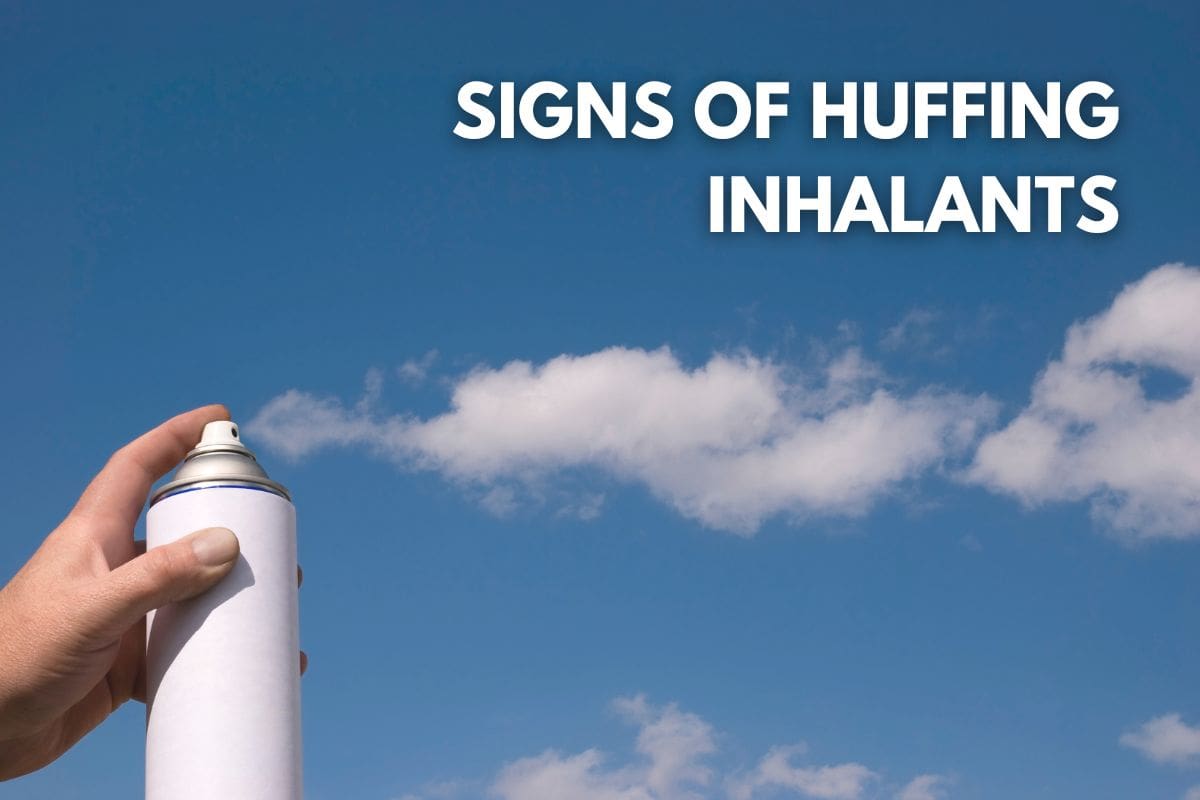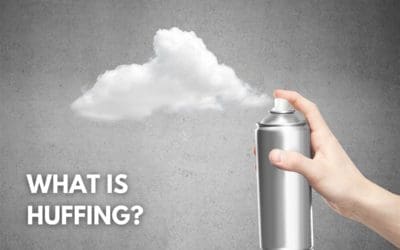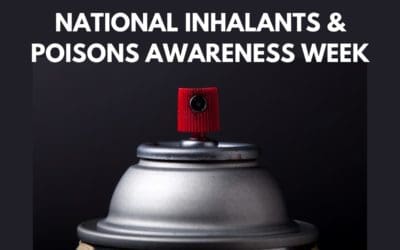Inhalants are chemicals found in domestic or workplace products. These chemicals release chemical vapors, which can be inhaled to experience mind-altering effects or to “get high.” It’s possible to abuse these inhalants like any other addictive drug, a practice known as “huffing.”
Over time, people can become dependent on them and develop a potentially deadly addiction. Inhalant addictions are relatively rare, however.
Signs Someone Close To You Is Huffing
Inhalant abuse may be harder to detect than other addictions because inhalants act quickly, and the mind-altering effects also disappear relatively fast (in a few minutes). However, it’s still possible to detect its abuse.
These are the 12 most common signs of huffing:
- Frequent red eyes and runny nose
- Sore mouth
- Unusually-smelling breath or clothes
- Stained clothes, face, or hands
- Loss of appetite, suffocation, nausea, vomiting, and disorientation
- Drunken or disoriented appearance
- Anxiety, irritability, and depression
- Hidden empty spray paint containers
- Slurred speech
- Insomnia
- Muscle weakness and headaches
- Convulsions and coma in extreme cases
Which Products Contain Addictive Inhalants?
Inhalants are present in hundreds of products we may find in our everyday life. Due to their availability and low price, inhalants are easy to access and hide.
They are most commonly found in volatile solvents (liquids that vaporize at room temperature), aerosols, gases, and nitrites. Some of the many products containing inhalants include:
- Paint thinners and removers
- Spray paints
- Gasoline
- Degreasers
- Rubber cement
- Nail polish removers
- Glues
- Dry cleaning and correction of fluids
- Felt tip markers
- Spray deodorants and hair sprays
- Vegetable oil sprays
- Fabric protector sprays
- Medical anesthetics like chloroform, halothane, and nitrous oxide
- Butane lighters, propane tanks, and refrigerants
- Nitrites such as those found in leather cleaners, liquid aroma, and deodorizers
Who Is Most Likely To Huff?
Various people use inhalants, but the age group that abuses them the most is teenagers between 14 and 15 – mostly because inhalants are widely available in homes and local stores. Most people in this age group start misusing inhalants and huffing for experimentation. Inhalant abuse tends to decline as they get older.
Other important points to know about people who huff are:
- It’s more common in men than women
- People who huff have a high rate of past sexual or physical abuse
- Criminal behavior, family conflicts, violence, and drug abuse are also common among people who huff
- Huffing is more common in people of lower income, people who suffer mental illnesses, and people who live in rural communities
Is It Possible To Overdose On Inhalants?
Yes, it is possible to overdose on inhalants. Since the inhalant “high” tends to last a few minutes at most, some people may repeatedly huff within short periods, increasing the chances of an overdose.
The following factors increase the chances of suffering an overdose:
- Long-term use
- Combining inhalants with other substances for a stronger high
- Taking higher and more frequent use
- Specific inhalants are more likely to cause an overdose, such as butane/propane (found in paint, hair sprays, and lighter fluid), freon (refrigerator cooling systems and spray cans), trichloroethylene (cleaners and degreasers), and nitrites
What Are The Long-Term Effects Of Huffing?
There are multiple long-term effects of huffing. One of the most prevalent long-term effects is related to nerve fibers in the brain and brain cell damage, which may lead to:
- Cognitive issues like memory problems, personality changes, learning disabilities, and diminished problem-solving abilities
- Hallucinations
- Vision issues
- Speaking problems
- Motor issues like muscle spasms and slow, clumsy movements
Inhalant Withdrawal Symptoms
While physical dependence on inhalants is relatively rare, psychological dependence is more common, leading users to seek more frequent or intense use.
In cases where the user has become addicted, withdrawal symptoms will appear when they stop huffing. The most common symptoms include:
- Hand tremors
- Agitation, restlessness, anxiety, and depression
- Excessive sweating and rapid heartbeat
- Runny eyes or nose
- Nausea, dizziness, vomiting, and headaches
- Insomnia
- Cravings to huff again
- Mood changes
- Poor memory
- Difficulty focusing
- Irritability and angry outbursts
Treatments For Inhalant Abuse
Various resources are available if you or someone you know is addicted to inhalants, including:
- Cognitive behavior therapy: to learn how to manage cravings and post-withdrawal stress.
- Family counseling: to improve communication between family members.
- Support groups: non-professional support groups like Narcotics Anonymous may help find motivation, inspiration, and structure by listening to the experiences of struggling or struggling with addiction.
- Social activities and engagement programs: as a supplement to professional treatment, parents can enroll their teens into engagement programs with other teens to offer an alternative to huffing, such as a summer camp.
Ultimately, the best treatment is the one that works the best for each individual. The important part is identifying the problem and starting to look for solutions. The exact method varies from person to person.
































